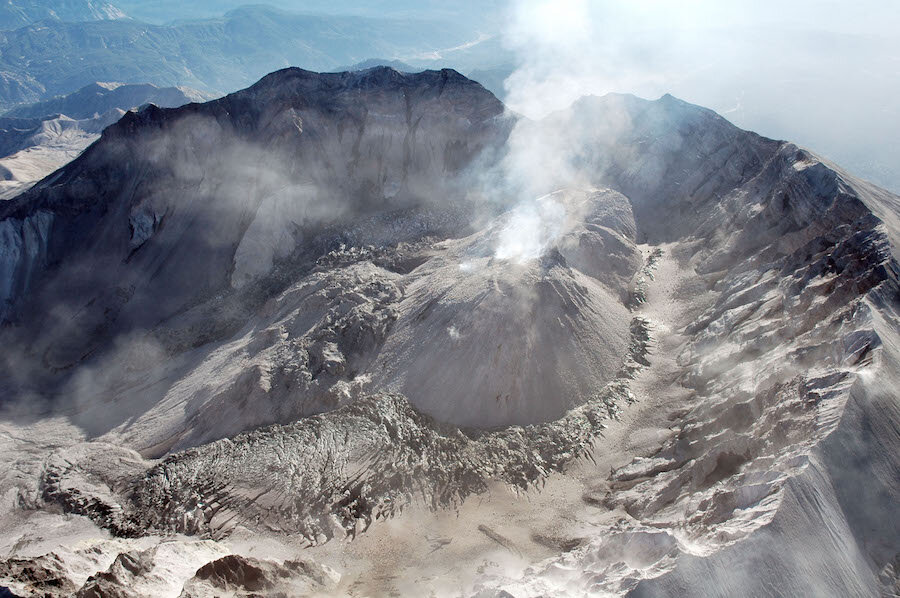Rumbles heard from Mount St. Helens: Is another major eruption coming?
Loading...
Mount St. Helens has been reminding researchers it is still an active volcano.
More than 130 small tremors have been documented in the Mount St. Helens region in Washington, according to the US Geological Survey. The quakes began in mid-March and have ramped up to nearly 40 localized earthquakes a week.
Thousands of small quakes preceded the massive eruption on May 18, 1980 that blew off nearly 1,000 feet of the mountain and spewed hot ash across the state, resulting in deaths, forest fires, and flooding.
But this time, the data collected offers more reassurance than worry, say the volcanologists.
"There is absolutely no sign that it will erupt anytime soon," the USGS said in a statement, "but the data we collect tells us that the volcano is still very much alive."
The more than 10,000 earthquakes that preceded the infamous 1980 explosion started small but soon escalated. On the morning of the explosion, a quake reached a magnitude of 5.1, considered moderate with a small chance of damage to buildings.
"What we're looking at [now] is way smaller," said Seth Moran, the scientist in charge at the USGS Cascades Volcano Observatory in Vancouver, Wash., reported Livescience.
Since the 1980 eruption, Mount St. Helens has become one of the most monitored volcanoes on the planet. Seismic monitoring networks, global positioning instruments, and many other devices allow researchers to pick up even the smallest anomaly in the activity around the volcano.
That means that while over 130 quakes have been documented in the area since mid-March, they’ve been incredibly small. Most of the quakes have had magnitudes of 0.5 or less, with the largest reaching only magnitude 1.3 – so small that humans would never notice it. And these tiny quake-lets are happening between one and four miles below the surface of the Earth.
“These earthquakes are too small to be felt, even if you were standing on the surface directly above them,” the USGS said.
No quakes have started close to the surface and no ground inflammation – the sign of an underground buildup of gas – has been detected.
In other words, say experts, all signs point a simple magma recharging process. As magma refills chambers below the volcano, the weight puts stress on the crust around and above it, causing these tiny earthquakes.
This swarm of quakes is far from being the first seismic activity since the 1980 eruption. The current patterns are similar to events in the 1990s, 2013, and 2014, some of which had much higher magnitudes.
In other words, another eruption will come – the volcano is still active, not dormant – but it remains years or even decades away, and will probably be fairly minor, like the several eruptions Mount St. Helens has experienced over the past 36 years.
“As was observed at Mount St. Helens between 1987-2004, recharge can continue for many years beneath a volcano without an eruption,” the USGS said.






